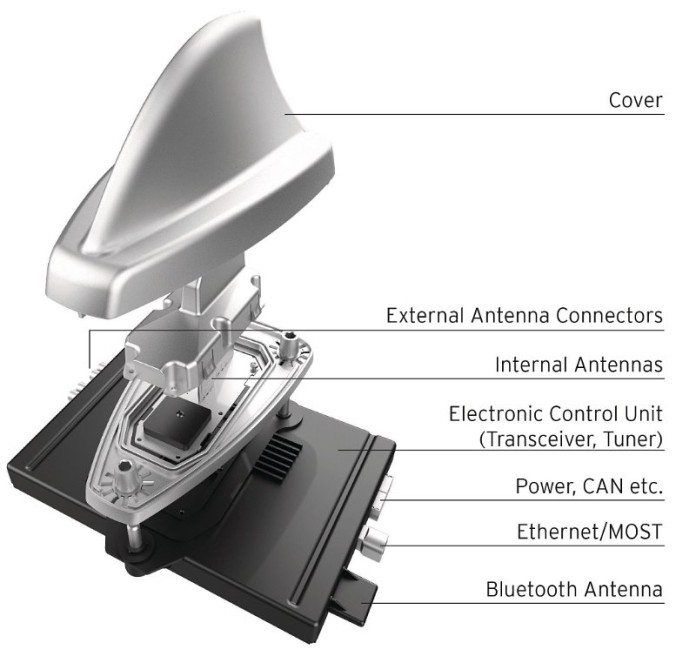
Transceiver, tuner and antenna combined in a single unit – Multiple radio services available centrally
VOXX International Corporation (NASDAQ: VOXX), today announced the availability of a smart antenna from its wholly-owned subsidiary, Hirschmann Car Communication GmbH, which offers technology that intelligently combines a transceiver, tuner and antenna in a single unit. The smart antenna fulfills the requirements of new system architectures, linking a range of services including radio, GPS, mobile communication, eCall, TV and Car-to-X in one central point, outside of the head unit.
“Our smart antenna offers automotive manufacturers an effective, basic technological structure that allows new standards, architectures and customer requirements for infotainment and communication services to be integrated in vehicles quickly, flexibly and in a scalable manner,” said Ludwig Geis, CEO of Hirschmann Car Communication GmbH. “It reduces complexity instead of increasing it. We have already conducted an extensive test program with a well-known automotive manufacturer, in which all of the customer requirements were successfully implemented.”
Transceiver, tuner and antenna combined
The smart antenna consists of a standard roof antenna and a control device, which contains the tuner and the transceiver and is responsible for demodulating and decoding from various radio services. The design reduces the in-car distances traveled by the analogue HF signals between the antenna and the receiver, which improves the signal quality for passengers making telephone calls, listening to the radio, using the navigation function or watching television. The direct signal processing and position on the vehicle roof are also ideal for receiving GHz signals for WLAN and Bluetooth connections, for example in Car-to-X communication. In addition, the bundling of functions at a central point does away with the need for coaxial cables and unnecessary interfaces in the car. If it is not possible for the control device and antenna to both be mounted on the roof in the same place (e.g. as is the case on convertibles), the components can be decoupled and positioned at different points.
Transfer of services from the head unit
The smart antenna also performs the functions that were previously integrated in the head unit. Updating the radio standard no longer requires the entire head unit to be replaced. Thanks to its scalability, the smart antenna can be connected to a range of head unit variants. Furthermore, fewer country-specific head unit variants are required, which significantly reduces development costs.
The smart antenna is controlled from the head unit and connected using only a digital bus system such as MOST or Ethernet. A direct connection can be established to smartphones and tablets via the WLAN and Bluetooth function.
Technical features of the smart antenna include:
- Mobile communication: 2G, 3G, 4G
- Emergency call functions with integrated battery concept: eCall and ERA-GLONASS
- Location data: GPS, GLONASS, Galileo, BeiDou
- Radio and TV: AM/FM, DAB/DAB+, HD/SiriusXM, DVB-T/-T2, ISDB-T
- Bluetooth and Bluetooth Low Energy
- WLAN hotspot
- Car-to-X communication as per 802.11p
- Automotive bus systems: MOST, Ethernet, CAN


